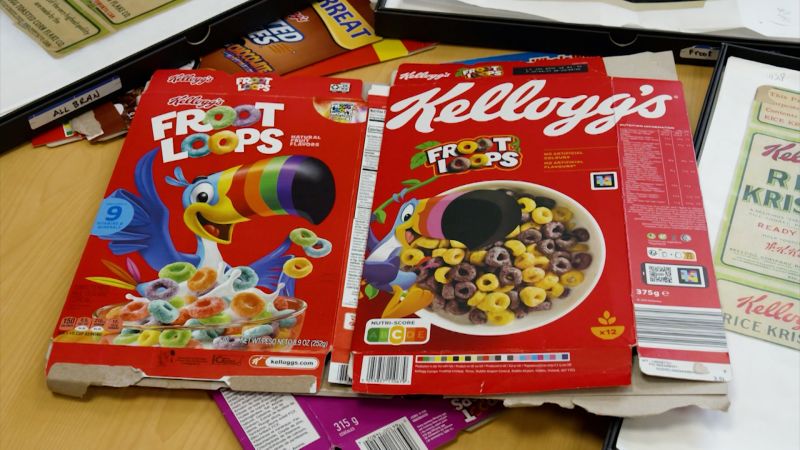We all know that breakfast is an important meal, and even more so for children. Abundant research has demonstrated the benefit of nutritious breakfasts on children’s health, well-being and academic performance.
Ready-to-eat cereals are the predominant breakfast choice among American children, according to the US Centers for Disease Control and Prevention.
But that may not be the best option for growing children and adolescents.
In newly launched cereals between 2010 and 2023, there were significant increases in fat, sodium and sugar and decreases in protein and fiber content, according to a new research study in JAMA Network Open.
Dr. Leana Wen: This study utilized a comprehensive database that tracks new product launches for food and beverages. Researchers examined cereal products that launched in the US market between 2010 and 2023 that were explicitly marketed to children ages 5 to 12 years old.
During this period, about 1,200 children’s ready-to-eat cereals were launched. Compared to 2010, total fat per serving increased 33.6%; sodium content increased by 32.1%; and sugar by 10.9%. On the other hand, both protein content and dietary fiber content decreased when comparing 2010 to 2023.
Notably, the average amount of added sugar is so high that a single serving of children’s cereal is more than 45% of the American Heart Association’s total daily recommended limit for children, according to the authors.
Wen: Frankly, yes. In recent years, many studies have shown the importance of a healthy breakfast to children’s well-being. Moreover, studies have demonstrated the problems associated with high levels of added sugar, sodium and fat content in food. Ultraprocessed foods laden with these additives have been associated with a myriad of negative health consequences, including obesity, diabetes, heart disease and premature death.
What’s upsetting to me is that many products that are ultraprocessed and contain high levels of unhealthy ingredients are being marketed as being “healthy.” A 2024 study published in the journal Nutrients found that 60% of foods marketed to children ages 6 months to 36 months on 10 supermarkets’ shelves failed to meet recommended nutritional guidelines from the World Health Organization for infant and toddler foods. Virtually none of these meet WHO’s standards for advertising— instead they contained inaccurate health claims or failed to have clear labeling.
All of this makes it hard for parents and families who want to choose healthier options for their children.
Wen: Parents should consider options outside of ready-made cereal. Some options for healthy breakfasts include steel-cut oats with honey and fresh fruit and whole-grain bread with peanut butter. Kids may also like eggs; no-sugar-added yogurt, which still has sugar in it; smoothies made with milk and fresh fruit; and homemade muffins. For parents looking for grab-and-go breakfasts, consider fresh fruit, nuts, hard-boiled eggs, muffins, smoothies and whole-grain bagels with low-fat cream cheese.
Wen: As a parent who has tried to find healthy cereals for my kids, I know myself that it is very hard to go through the cereal aisle and make sense of the packaging that claim the cereal is healthy.
The best thing to do is to look at the label for each cereal you are considering. First, look for whole grains. Ideally, the label says that the cereal has 100% whole grain. Then, look at the sugar content. It’s best to have added sugar of less than 9 grams per serving . According to the Dietary Guidelines for Americans, 10 grams per serving would already be 20% of the entire amount of added sugar someone is recommended to consume a day, if they have a 2,000 calorie diet. Try to find cereals with no food dyes or low-calorie sweeteners. The Center for Science in the Public Interest has a list of relatively healthier cereals.
From a policy perspective, last year, the US Food and Drug Administration proposed a front-of-package label that would make it easier for consumers to know how products compare with regard to their added sugar, salt and saturated fat content. I think these improved labels can help if they are implemented.
US Health and Human Services Secretary Robert F. Kennedy Jr. has made reducing ultraprocessed food a centerpiece of his “Make America Healthy Again” agenda. Perhaps there will be policy solutions Kennedy will announce that can make it easier for families to opt for healthier choices.
Wen: I think the takeaway should be simply knowing that many cereals marketed to children are not the most nutritious choices. This doesn’t mean children should never be served these cereals but try to serve them in moderation or as a treat.
Since I became aware of just how laden with additives our favorite cereals were, I began to serve my kids these cereals only as a treat, opting usually for milk served with steel-cut oats or whole-grain toast and peanut butter. On days when they have cereal, I make sure to tell them it’s a treat — just as I tell them it’s a treat when they have cookies and cupcakes. And then I try to make sure that their other meals are healthy.
Wen: It’s best to aim for meals with whole foods that are minimally processed, such as whole grains, fresh fruits, leafy green vegetables, legumes, fish and lean meat. Also keep in mind that what kids drink is just as important as what they eat. Stay away from sodas, juice drinks, energy drinks and other drinks with caffeine and high amounts of added sugar.

